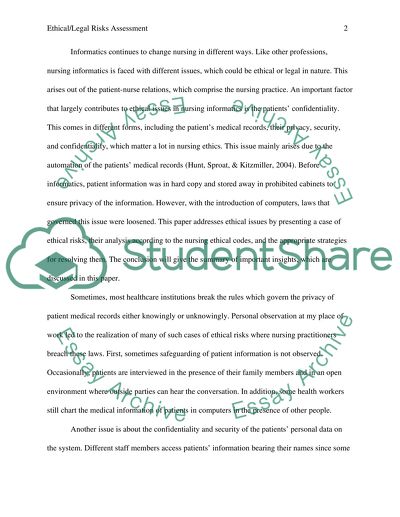Cite this document
(“Ethical/Legal Risks Assessment Coursework Example | Topics and Well Written Essays - 1250 words”, n.d.)
Retrieved from https://studentshare.org/nursing/1462154-ethical-legal-risks-assessment
Retrieved from https://studentshare.org/nursing/1462154-ethical-legal-risks-assessment
(Ethical/Legal Risks Assessment Coursework Example | Topics and Well Written Essays - 1250 Words)
https://studentshare.org/nursing/1462154-ethical-legal-risks-assessment.
https://studentshare.org/nursing/1462154-ethical-legal-risks-assessment.
“Ethical/Legal Risks Assessment Coursework Example | Topics and Well Written Essays - 1250 Words”, n.d. https://studentshare.org/nursing/1462154-ethical-legal-risks-assessment.


